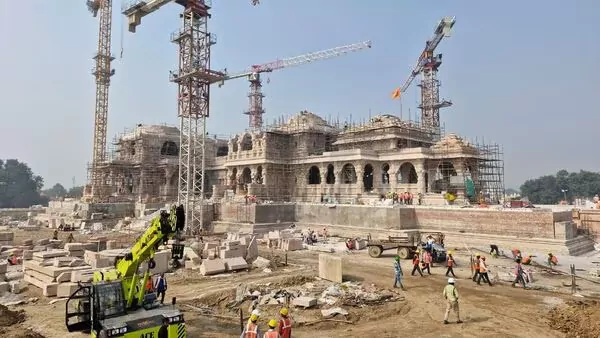In the sacred city shri ram mandir in Ayodhya stands as a testament to faith, architectural brilliance, and modern engineering. This blog unveils the intricate details, fascinating facts, and the cultural significance of this monumental structure.
Construction Team
Led by chief architects Chandrakant Sompura, Nikhil Sompura, and Ashish Sompura, the temple’s design received invaluable input from esteemed institutions like IIT Guwahati, IIT Chennai, IIT Bombay, NIT Surat, CBRI Roorkee, Structural Engineering Research Centre Roorkee, and NGRI Hyderabad. The construction is in the capable hands of Larsen and Toubro (L&T), with engineering expertise from Tata Consulting Engineers Limited (TCEL). Sculptors Arun Yogiraaj, Ganesh Bhatt, and Satyanarayan Pandey have contributed their artistic skills.
Architectural Marvel
Spanning 70 acres with 70% dedicated to greenery, the temple covers an impressive 2.77 acres. Its dimensions, at 380 ft. length, 250 ft. width, and 161 ft. height, follow the traditional Indian Nagar style. Boasting three stories, 392 pillars, and 44 intricately carved doors, the Shri Ram Mandir is set to be a modern-day marvel.
Infrastructure
Beyond religious significance, the temple complex encompasses essential facilities. It includes a Sewage Treatment Plant (STP), Water Treatment Plant (WTP), Fire Services, and an Independent Power Station. A Pilgrims Facility Centre, with a capacity for 25,000, provides medical and locker facilities. Additional amenities include bathing areas, washrooms, washbasins, and open taps. To ensure the temple’s safety, 200 KA Lightning Arresters have been strategically installed.
Cultural and Educational Hub
Designed not just as a religious center but also a cultural and educational hub, the temple complex features a museum showcasing artifacts related to Lord Ram and the Ramayana.
Unique Features
1. A time capsule buried 2,000 feet below the ground preserves information about the temple, Lord Rama, and Ayodhya to ensure its legacy.
2. Earthquake-resistant construction with an estimated age of 2,500 years.
3. Idols made from 60 million-year-old Shaligram Rocks from the Gandaki River in Nepal.
4. The temple bell, made of Ashtadhatu in Tamilnadu, weighs 2100 kg, and its resonant sound can be heard up to 15 km away.
The Shri Ram Mandir is not just a place of worship but a convergence of tradition, engineering excellence, and cultural heritage. It stands as a symbol of devotion, showcasing the fusion of modernity with the deep-rooted spirituality of Ayodhya.
GENIEFIE TRIP PLANNER
ANDROID
IOS

